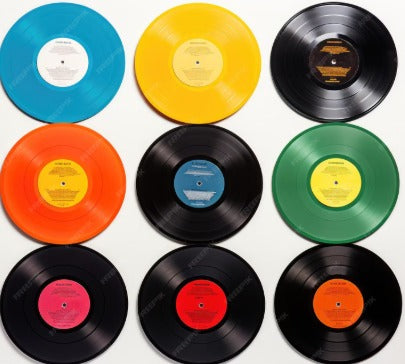
Coloured vs. Black Vinyl: Does It Really Sound Different?
Coloured vs. Black Vinyl: Does It Really Sound Different?
It’s one of the most common questions we hear from collectors: Does coloured vinyl sound worse than black? The short answer? Not anymore.
Historically, black vinyl was considered the gold standard for sound quality. That’s because black carbon, used to colour the PVC, also strengthens the material and reduces surface noise. Early coloured pressings sometimes suffered from hiss or crackle due to weaker dye blends and inconsistent cooling during production.
But times have changed. Modern pressing plants now use refined formulas and high-quality dyes that make today’s coloured vinyl virtually indistinguishable from black in terms of sound. Unless you’re dealing with novelty formats like glow-in-the-dark or picture discs—which do have known playback limitations—there’s no reason to avoid coloured vinyl on sonic grounds.
So what’s the real difference?
- Black Vinyl: Slightly more stable due to carbon additives. Still the go-to for audiophiles.
- Coloured Vinyl: Offers visual flair and collectability. When pressed well, it sounds just as good.
- Picture Discs & Gimmicks: Great for display, but often less durable and noisier on playback.
At Mostly Music Store, we stock both black and coloured pressings—always chosen for quality, condition, and collector value. Whether you’re chasing a rare swirl variant or a classic black cut, rest assured: we only list records that sound as good as they look.